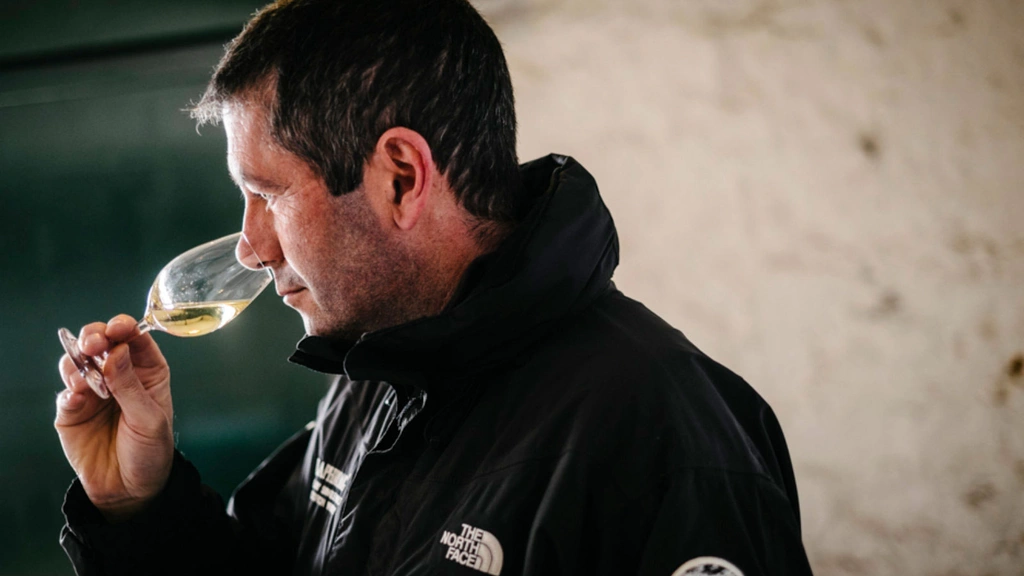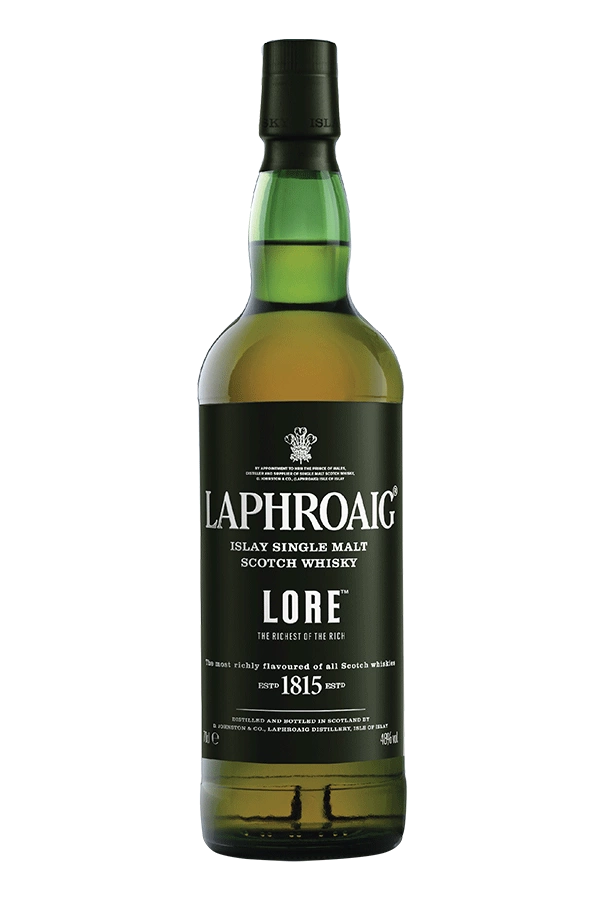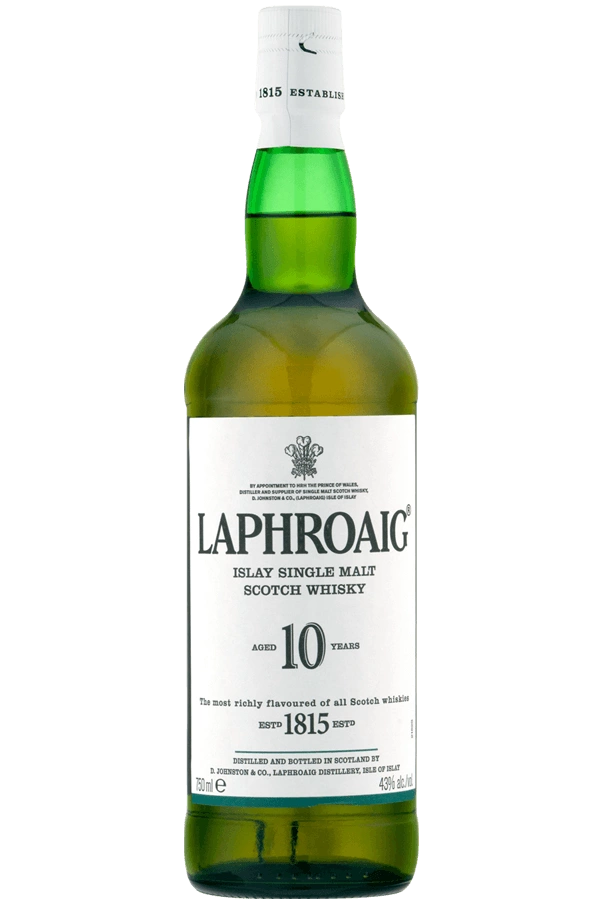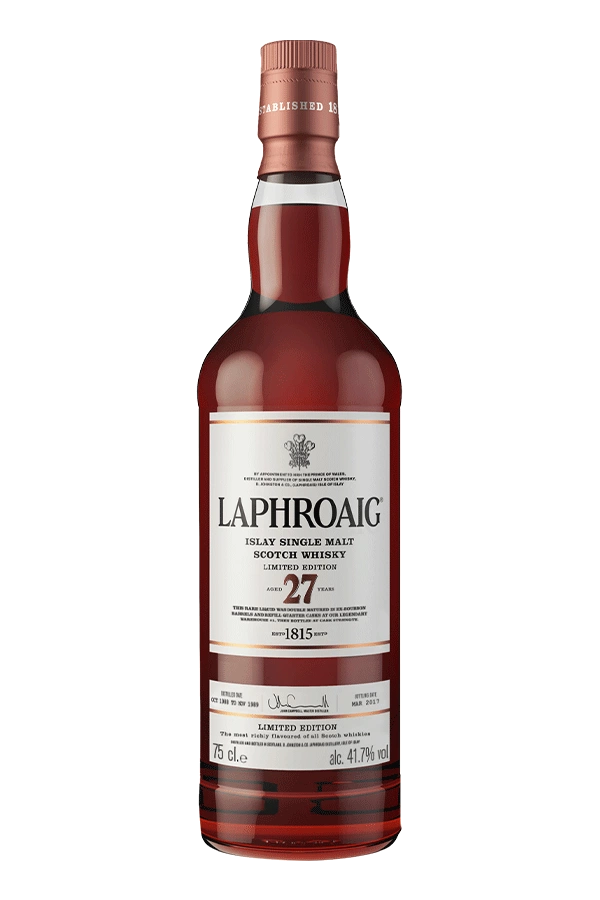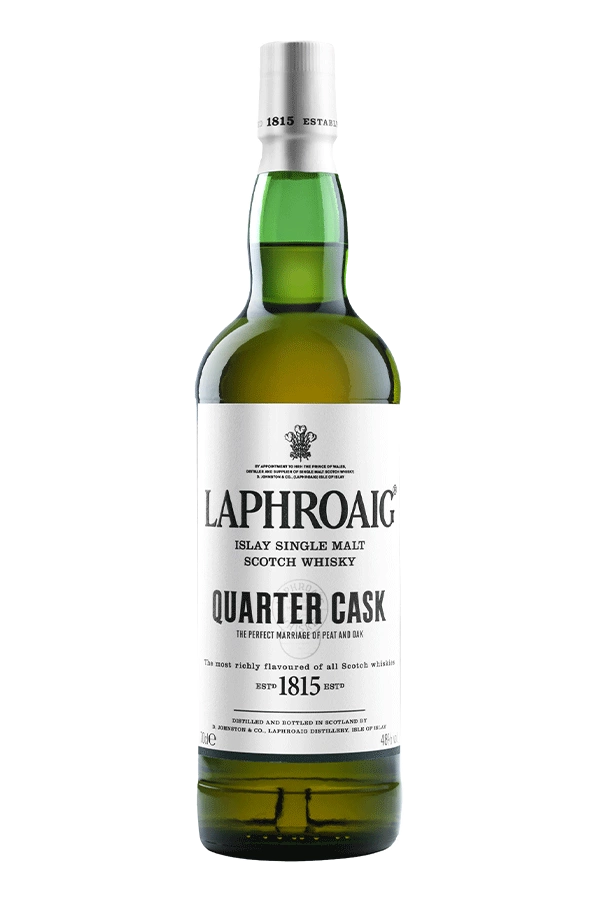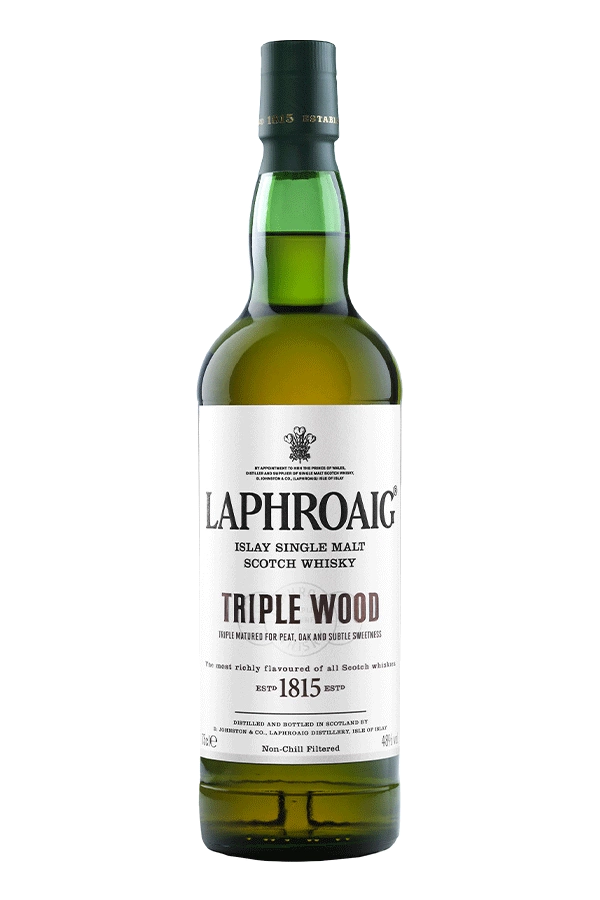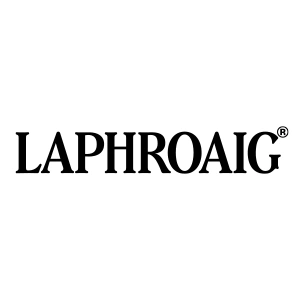
Laphroaig Timeline
On the far edge of the Scotch whisky map, it's supposed that the art of distillation was first brought to Islay by Irish monks. Being remote, it’s an art that flourished in the hands of the islanders, whose illegal operations tested the resolve and means of the tax man. Eventually, the law relaxed, various whisky makers set up legitimate distilleries, among them a pair of farmers, Donald and Alexander Johnston, who in 1815 founded their distillery on the island’s south coast. Laphroaig, so called after its location, ‘broad hollow by the bay.’ It would remain in family hands for the next 139 years
1810
Two brothers, Donald & Alexander Johnston, leased 1000 of land from the laird of Islay, for rearing cattle.
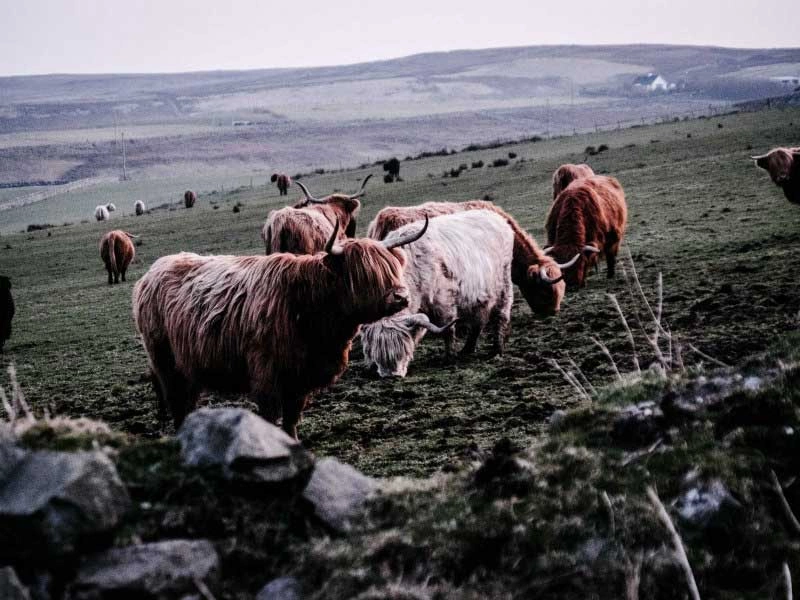
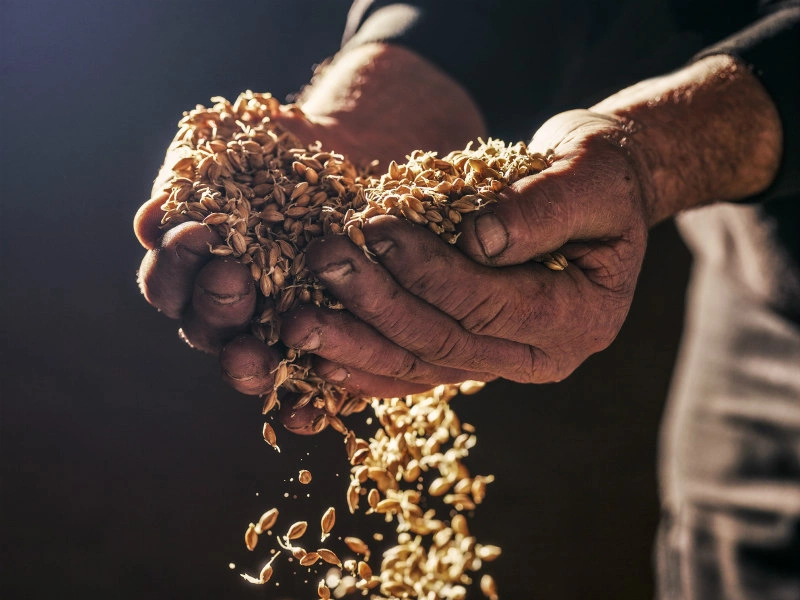
1815
Surplus barley from cattle feed is kept and used to distil whisky.
The word had spread around Islay that the whisky being produced at Laphroaig was particularly good. It soon became more profitable to distil whisky than raise cattle, and in that year Laphroaig whisky was “officially” born.
1836
Donald offered his brother Alexander £350 for his share of Laphroaig. Alexander agreed, and later emigrated to Australia where he lived to a ripe old age, dying in 1881.
Unfortunately, Donald only lived until 1847. It is believed that he died after falling into a vat of partially-made whisky.
Donald’s only heir was his son, Dugald. At just 11 years old, he was too young to take over, so the distillery was looked after by his uncle, John Johnston, and a local farmer, Peter McIntyre.

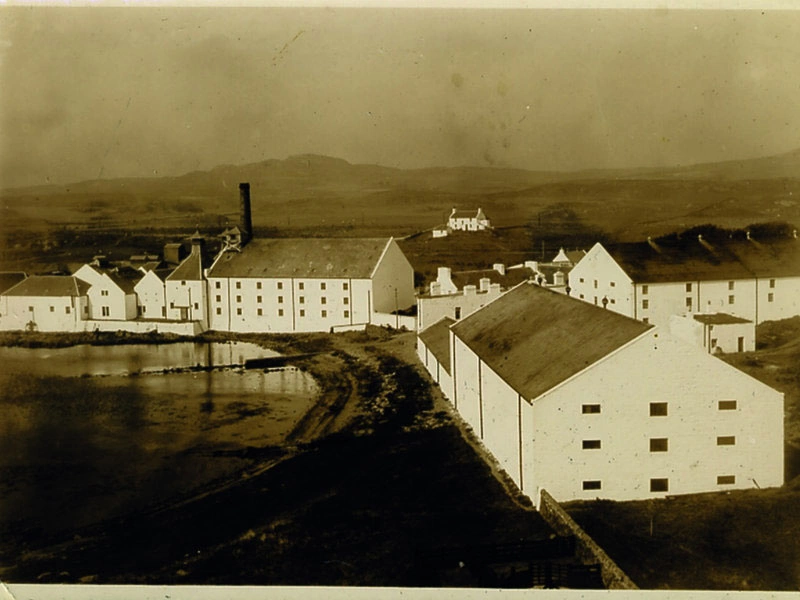
1857
By 1857, Dugald Johnston was old enough to take over the running of the distillery himself. He was assisted by his cousin, Alexander Johnston. Together they ran the distillery until Dugald died on 6th January 1877.
However, as was the way in the late nineteenth century, much of Islay’s malt went into blends, and Laphroaig was no different. Its smoky, peaty taste was highly appreciated by whisky blenders. It was especially coveted by Laphroaig’s next door neighbours at Lagavulin, which was owned by Mackie and Co, Glasgow spirit and blending merchants. Mackie were taking the lion’s share of Laphroaig’s output for blending with grain whisky. This had always troubled Dugald, as it restricted Laphroaig’s ability to sell its own single malt whisky to a wider market.
With Laphroaig gaining more and more of a reputation as a single malt, the problem was now coming to a head.
1887
Alexander died and the distillery was inherited by his sisters, Mrs William Hunter and Katherine Johnston, and by his nephew, J. Johnston-Hunter.

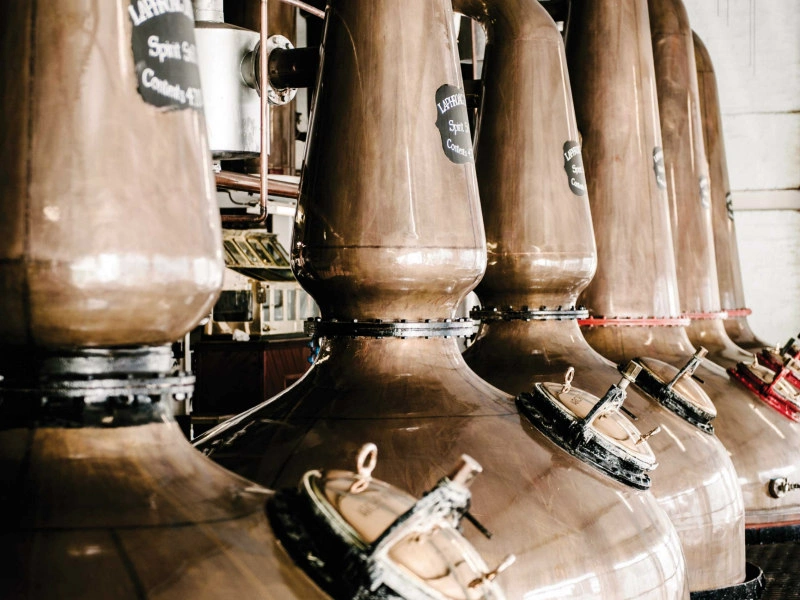
In 1908,
in a fit of pique, a long standing feud with Peter Mackie came to a head. He decided that if he couldn’t beat us, then he would join us – sort of. With the help of Laphroaig’s head brewer, who he had persuaded to work for him at Lagavulin, he built an exact copy of the Laphroaig still house, hoping to create another Laphroaig.
1921
One might have thought that with Laphroaig’s head brewer, exact copies of the stills, the same bay right next door, and a nearby source of water, it would be easy to copy Laphroaig’s taste. Not so. Such is the delicate alchemy of Laphroaig.

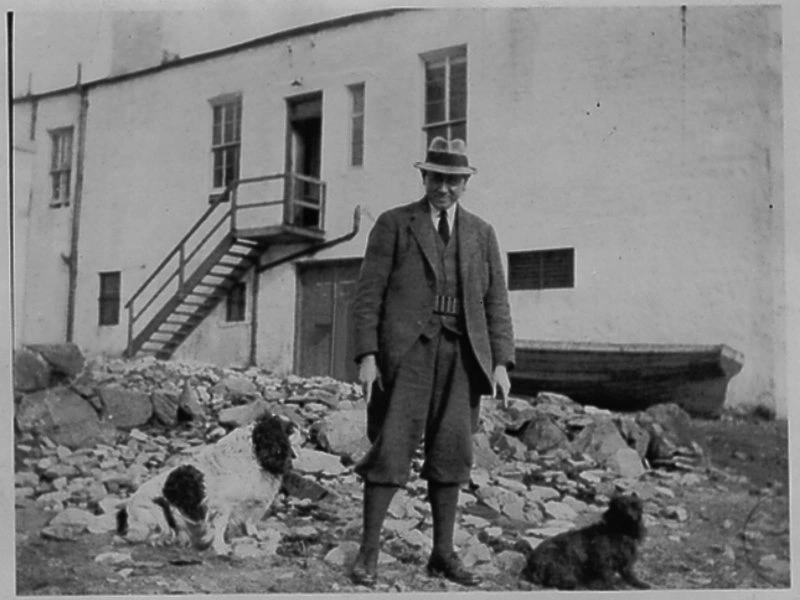
1923
Ian Hunter – son of William Hunter – took over the running of the distillery in 1921 and revitalised it.
1929
Upon taking up ownership of the distillery, Ian literally spread the Laphroaig gospel around the world.

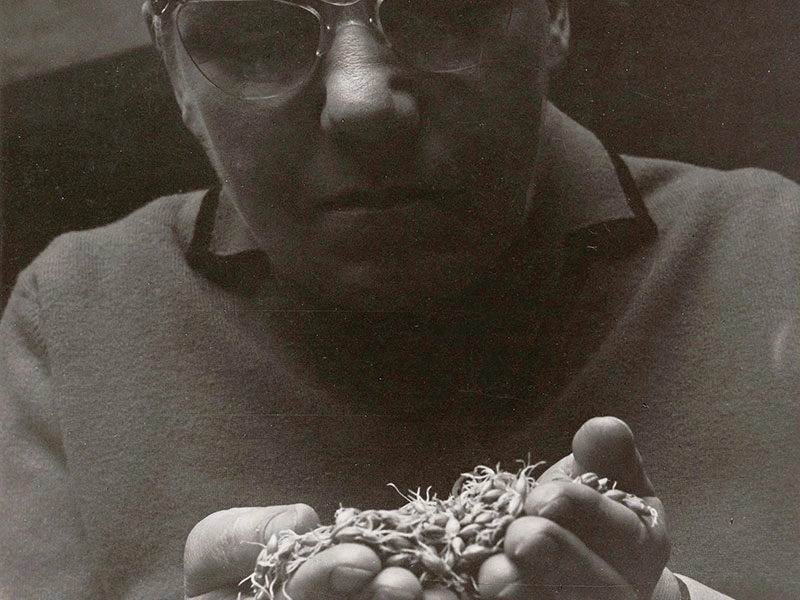
1935
Bessie Williamson left Glasgow University with an MA in 1932. With jobs scarce in the economic slump that hit cities like Glasgow in the early 1930s, she took on a succession of temporary appointments.
In her search for regular employment, she kept in close touch with her uncle Willie, who was accountant to none other than Ian Hunter at Laphroaig. One summer, Ian wrote to him asking if he knew of a reliable woman for a summer office job. Bessie jumped at the chance and arrived with just one suitcase, for the summer, unaware that it would be 40 summers and the love of a lifetime before she left.
However, in Bessie he found a person that had passion, integrity and the drive to maintain the great traditions of this whisky. So, over the years, he passed on to her all the distillery knowledge he had acquired.
It was during this time that Ian’s ideas for maturing Laphroaig’s spirit in ex-bourbon American white oak casks began to properly take hold.
1954
During the war, the Laphroaig distillery was commandeered as a military depot. Ian Hunter was now confined to a wheelchair and had decided that – on his death – Bessie Williamson was the only person that could maintain and develop Laphroaig’s long traditions. He died in 1954, bequeathing the whole distillery to her.

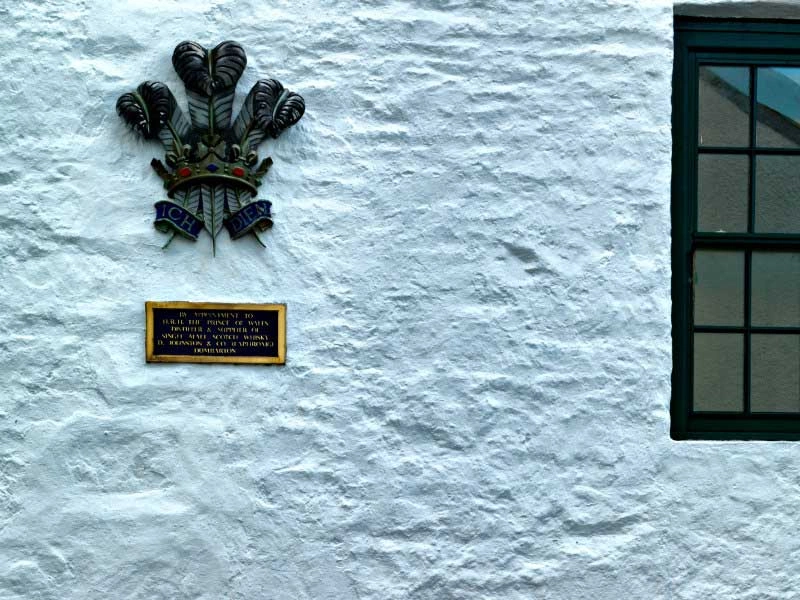
1994
In 1994, HRH Prince Charles visited Laphroaig for the first time and gave the distillery his Royal Warrant.
2015
The 200th year was celebrated with a whole host of events and special releases.
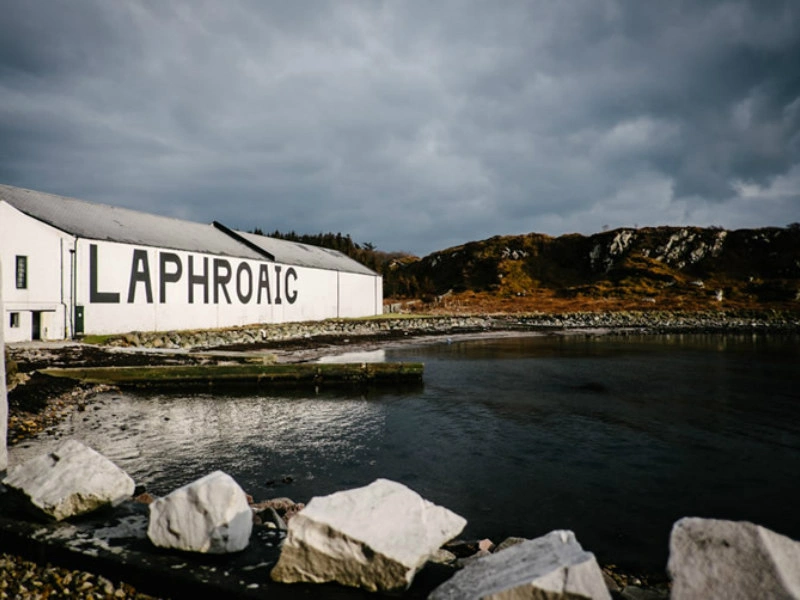

1810
Two brothers, Donald & Alexander Johnston, leased 1000 of land from the laird of Islay, for rearing cattle.

1815
Surplus barley from cattle feed is kept and used to distil whisky.
The word had spread around Islay that the whisky being produced at Laphroaig was particularly good. It soon became more profitable to distil whisky than raise cattle, and in that year Laphroaig whisky was “officially” born.

1836
Donald offered his brother Alexander £350 for his share of Laphroaig. Alexander agreed, and later emigrated to Australia where he lived to a ripe old age, dying in 1881.
Unfortunately, Donald only lived until 1847. It is believed that he died after falling into a vat of partially-made whisky.
Donald’s only heir was his son, Dugald. At just 11 years old, he was too young to take over, so the distillery was looked after by his uncle, John Johnston, and a local farmer, Peter McIntyre.

1857
By 1857, Dugald Johnston was old enough to take over the running of the distillery himself. He was assisted by his cousin, Alexander Johnston. Together they ran the distillery until Dugald died on 6th January 1877.
However, as was the way in the late nineteenth century, much of Islay’s malt went into blends, and Laphroaig was no different. Its smoky, peaty taste was highly appreciated by whisky blenders. It was especially coveted by Laphroaig’s next door neighbours at Lagavulin, which was owned by Mackie and Co, Glasgow spirit and blending merchants. Mackie were taking the lion’s share of Laphroaig’s output for blending with grain whisky. This had always troubled Dugald, as it restricted Laphroaig’s ability to sell its own single malt whisky to a wider market.
With Laphroaig gaining more and more of a reputation as a single malt, the problem was now coming to a head.

1887
Alexander died and the distillery was inherited by his sisters, Mrs William Hunter and Katherine Johnston, and by his nephew, J. Johnston-Hunter.

In 1908,
in a fit of pique, a long standing feud with Peter Mackie came to a head. He decided that if he couldn’t beat us, then he would join us – sort of. With the help of Laphroaig’s head brewer, who he had persuaded to work for him at Lagavulin, he built an exact copy of the Laphroaig still house, hoping to create another Laphroaig.

1921
One might have thought that with Laphroaig’s head brewer, exact copies of the stills, the same bay right next door, and a nearby source of water, it would be easy to copy Laphroaig’s taste. Not so. Such is the delicate alchemy of Laphroaig.

1923
Ian Hunter – son of William Hunter – took over the running of the distillery in 1921 and revitalised it.

1929
Upon taking up ownership of the distillery, Ian literally spread the Laphroaig gospel around the world.

1935
Bessie Williamson left Glasgow University with an MA in 1932. With jobs scarce in the economic slump that hit cities like Glasgow in the early 1930s, she took on a succession of temporary appointments.
In her search for regular employment, she kept in close touch with her uncle Willie, who was accountant to none other than Ian Hunter at Laphroaig. One summer, Ian wrote to him asking if he knew of a reliable woman for a summer office job. Bessie jumped at the chance and arrived with just one suitcase, for the summer, unaware that it would be 40 summers and the love of a lifetime before she left.
However, in Bessie he found a person that had passion, integrity and the drive to maintain the great traditions of this whisky. So, over the years, he passed on to her all the distillery knowledge he had acquired.
It was during this time that Ian’s ideas for maturing Laphroaig’s spirit in ex-bourbon American white oak casks began to properly take hold.

1954
During the war, the Laphroaig distillery was commandeered as a military depot. Ian Hunter was now confined to a wheelchair and had decided that – on his death – Bessie Williamson was the only person that could maintain and develop Laphroaig’s long traditions. He died in 1954, bequeathing the whole distillery to her.

1994
In 1994, HRH Prince Charles visited Laphroaig for the first time and gave the distillery his Royal Warrant.

2015
The 200th year was celebrated with a whole host of events and special releases.
Laphroaig® Brand Story - Opinions Welcome
Laphroaig single malt peated whisky from Islay. The most richly flavored scotch whisky in the world. It’s a complex beast — even our closest friends describe us in seemingly disparaging terms … before saying ‘they love us’!
